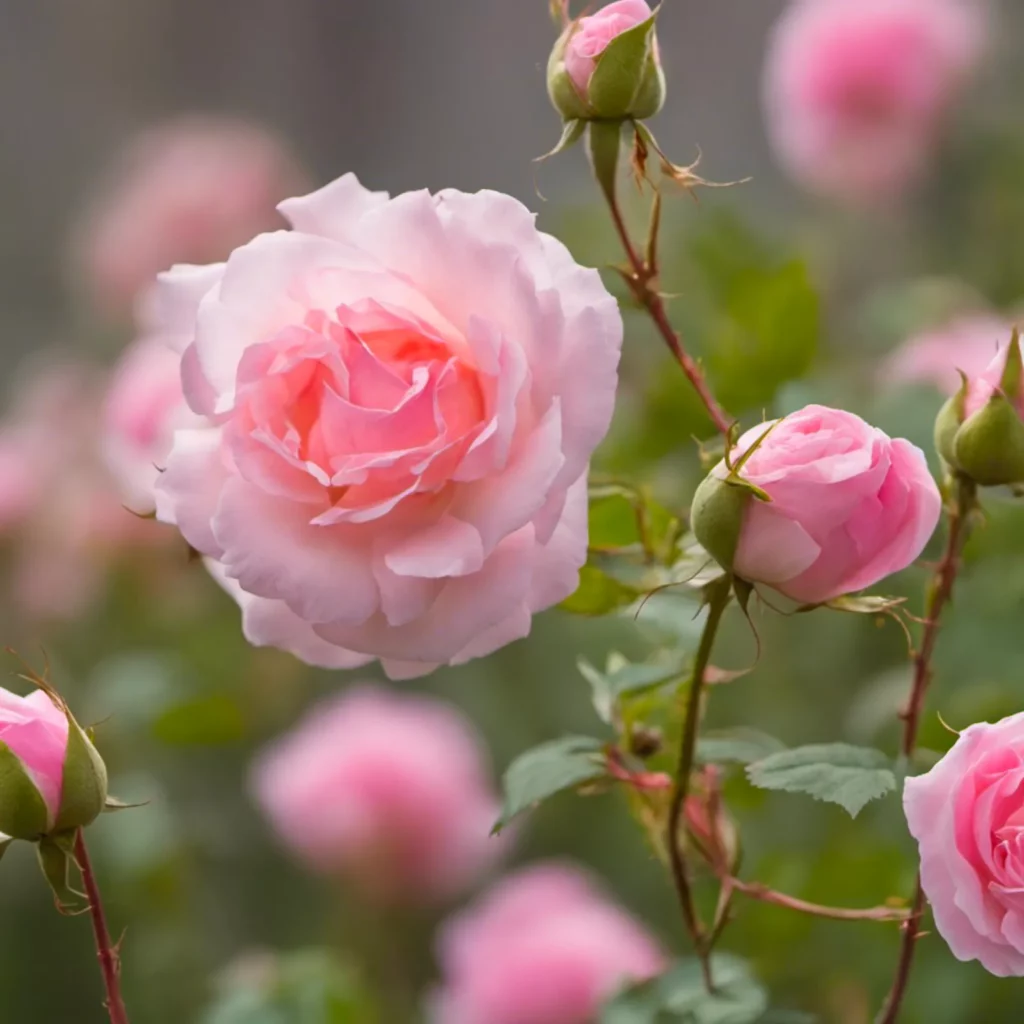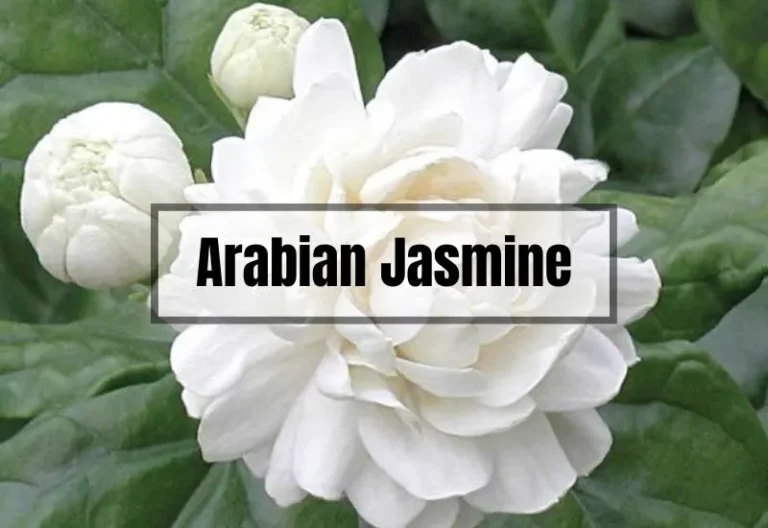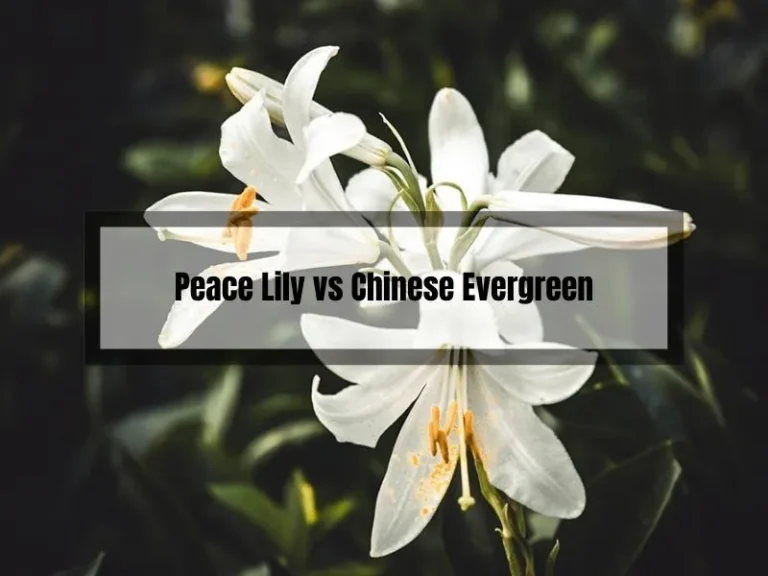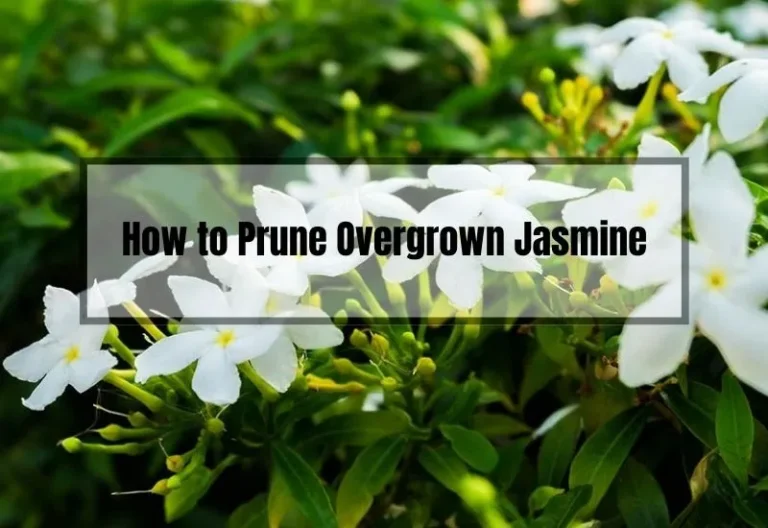Noisette Rose: A Guide to Growing and Caring for this Beautiful Climbing Rose
Welcome to the world of Noisette Roses! These beautiful and fragrant roses, named after French nurserymen Louis and Philippe Noisette, were introduced in the early 19th century. They are a cross between China and Musk roses, known for their climbing abilities and a variety of colors such as pink, white, and yellow.
Noisette roses are low-maintenance and resistant to diseases like black spot. With proper care, they can bloom multiple times a year, making them a perfect addition to any garden.
In this article, we’ll explore what Noisette roses are, their history, and how to care for them, whether you’re an experienced gardener or just starting out.

Noisette Rose
If you’re looking for a beautiful, fragrant rose to add to your garden, look no further than the Noisette Rose.
This lovely hybrid is a cross between the Musk Rose and the Tea Rose, resulting in a climbing plant that produces delicate, pale-pink blooms. In this section, we’ll take a closer look at the history and characteristics of this stunning rose.
History
The Noisette Rose is named after the French nurserymen Louis and Philippe Noisette. The story goes that Louis sent an ‘Old Blush’ China rose to his brother Philippe in South Carolina around 1802. Philippe gave ‘Old Blush’ to his neighbor, a farmer named John Champneys. Champneys then crossbred ‘Old Blush’ with a Musk Rose, resulting in the first Noisette Rose.
The Noisette Rose quickly became popular in the United States and Europe, and breeders began to create new varieties with larger flowers and new colors. Today, dozens of Noisette Rose varieties can be found throughout the world.
Characteristics
Noisette Roses are known for their climbing habit and delicate, fragrant blooms. Here are some key characteristics of this beautiful rose:
- Bloom: Noisette Roses typically bloom heavily in both spring and fall, with scattered flowers throughout the summer.
- Range: Noisette Roses thrive in the southern and western United States, though some varieties may be tender in colder regions.
- Light: Noisette Roses require at least six hours of direct sunlight each day.
- Soil: Noisette Roses can grow in any well-drained soil.
- Water: During the growing season, Noisette Roses should be watered with about 1 inch of water per week, soaking the root zone.
Noisette Roses are also known for their disease resistance, making them a popular choice for gardeners who want a beautiful, low-maintenance plant.
Cultivation and Care
Now that you’re excited about the Noisette Rose, let’s talk about how to cultivate and care for this beautiful flower.
Planting
Noisette Roses grow best in fertile, well-drained soil in full sun or partial shade. Make sure the soil is moist, but not waterlogged.
When planting, dig a hole twice as wide as the root ball and deep enough so the top of the root ball is level with the soil surface.
Watering
Water your Noisette Rose deeply once a week, making sure the soil is moist but not waterlogged. If you live in an area with hot, dry summers, you may need to water more often.
Pruning
Prune your Noisette Rose in late winter or early spring, before new growth appears. Remove any dead or diseased wood, and cut back any remaining canes to about half their length.
Fertilizing
Fertilize your Noisette Rose in early spring, just as new growth begins. Use a balanced fertilizer, such as 10-10-10, and follow the manufacturer’s instructions for application rates.
Disease and Pest Control
Noisette Roses are generally disease-resistant, but they can be susceptible to black spot and powdery mildew. To prevent these diseases, make sure your plant has good air circulation and remove any fallen leaves. If you do notice signs of disease, use a fungicide according to the manufacturer’s instructions.
As for pests, Noisette Roses can be attacked by aphids, spider mites, and thrips. If you notice any of these pests, use an insecticidal soap or horticultural oil according to the manufacturer’s instructions.
By following these simple cultivation and care tips, you can enjoy the beauty of the Noisette Rose in your own garden.
What Makes Noisette Rose Unique?
If you’re looking for a rose that’s unlike any other, look no further than the Noisette Rose. Here are a few things that make this rose variety unique:
- Climbing structure: Unlike many other roses, Noisette Roses are climbers. They have a unique structure that allows them to grow tall and wide, making them perfect for trellises, walls, and other structures.
- Delicate blooms: Noisette Roses are known for their delicate, pale-pink blooms. These blooms are smaller than those of many other rose varieties, but they make up for it with their unique beauty.
- Sweet fragrance: Noisette Roses have a sweet fragrance that’s sure to delight your senses. Whether you’re walking past a trellis covered in blooms or bringing a bouquet of Noisette Roses inside, you’ll love the sweet, delicate scent.
- Southern heritage: Noisette Roses have a long history in the Southern United States. They were first developed by John Champneys, a landowner in South Carolina, in the early 19th century. Champneys crossed an ancient pink Chinese rose called Old Blush with a centuries-old, cluster-flowered European musk rose to create the Noisette Rose.
- Variety of hues: While many Noisette Roses have pale-pink blooms, there are also varieties with yellow and apricot hues. This variety of colors makes it easy to find a Noisette Rose that will fit perfectly in your garden or home.
Overall, the Noisette Rose is a unique and beautiful rose variety that’s sure to delight anyone who loves flowers. Whether you’re a seasoned gardener or just starting out, adding a Noisette Rose to your collection is a great way to add a touch of Southern charm and beauty to your home.
How to Propagate Noisette Rose?
If you want to propagate your Noisette Rose, there are two methods you can use: softwood cuttings and hardwood cuttings. Here’s how to do it:
Softwood Cuttings
- Wait until the bloom initiates in spring to summer to take softwood cuttings.
- Select a healthy stem from the parent plant.
- Cut a 6-inch section of the stem, making sure it includes a few leaves.
- Remove the leaves from the bottom half of the cutting.
- Dip the bottom of the cutting in rooting hormone powder.
- Plant the cutting in a container filled with potting mix.
- Water the cutting and cover it with a plastic bag to create a humid environment.
- Place the container in a warm, bright spot but out of direct sunlight.
- Check the cutting regularly and keep the soil moist.
- After a few weeks, the cutting should have roots and can be transplanted to a larger pot or directly into the ground.
Hardwood Cuttings
- Wait until fall to take hardwood cuttings.
- Select a healthy stem from the parent plant.
- Cut a 12-inch section of the stem, making sure it includes a few buds.
- Remove the leaves from the bottom half of the cutting.
- Dip the bottom of the cutting in rooting hormone powder.
- Plant the cutting in a container filled with potting mix.
- Water the cutting and cover it with a plastic bag to create a humid environment.
- Place the container in a cool, bright spot but out of direct sunlight.
- Check the cutting regularly and keep the soil moist.
- After a few months, the cutting should have roots and can be transplanted to a larger pot or directly into the ground.
Propagating your Noisette Rose can be a rewarding experience, and it’s a great way to expand your garden or share your love of roses with friends and family. Just remember to be patient and follow the steps carefully to ensure the best chance of success.
What Are the Common Diseases of Noisette Rose?
Noisette roses are known for their hardiness and disease-resistant qualities. However, like all plants, they are still susceptible to a few common diseases. Here are some of the most common diseases that can affect your Noisette roses:
Black Spot
Black spot is a fungal disease that can affect many types of roses, including Noisette roses. It appears as circular black spots on the leaves, which can eventually cause the leaves to yellow and fall off.
To prevent black spot, make sure to water your Noisette roses at the base of the plant and avoid getting the leaves wet. You can also use a fungicide spray to treat black spot.
Related Post:
Does Neem Oil Kill Black Spot on Roses? Find Out Here!
Does Washing Up Liquid Kill Black Spot on Roses? Find Out Now!
Powdery Mildew
Powdery mildew is another fungal disease that can affect Noisette roses. It appears as a white powdery coating on the leaves, which can eventually cause the leaves to curl and distort.
To prevent powdery mildew, make sure to water your Noisette roses at the base of the plant and avoid overcrowding your plants. You can also use a fungicide spray to treat powdery mildew.
Rose Rosette Disease
Rose rosette disease is a virus that can affect many types of roses, including Noisette roses. It is spread by a tiny mite and can cause the plant to grow deformed stems, leaves, and flowers.
Unfortunately, there is no cure for rose rosette disease, and infected plants must be removed and destroyed to prevent the disease from spreading.
Aphids
Aphids are small insects that can suck the sap from the leaves and stems of Noisette roses.
They can cause the leaves to curl and distort and can also transmit viruses to the plant. To prevent aphids, you can use a spray of soapy water or insecticidal soap to kill them.
Thrips
Thrips are another small insect that can affect Noisette roses. They can cause the leaves to become distorted and can also transmit viruses to the plant. To prevent thrips, you can use a spray of insecticidal soap or neem oil to kill them.
By taking good care of your Noisette roses and keeping an eye out for these common diseases, you can help ensure that your plants stay healthy and beautiful all season long.
What Are the Best Companions for Noisette Rose?
Noisette roses are known for their sweet fragrance and delicate blooms. They were first bred in Charleston, South Carolina, by John Champneys in the early 1800s.
Since then, they have become a popular choice for gardeners who want a beautiful and fragrant addition to their gardens. But what are the best companions for Noisette rose?
Bee Balm
Bee balm is a great companion plant for Noisette roses. This plant attracts bees and other pollinators to your garden, which can help your roses thrive.
Bee balm comes in a variety of colors, including pink, red, and purple. It also has a long blooming period, which means you’ll have flowers in your garden for a long time.
Lantana
Lantana is another great companion plant for Noisette roses. This plant comes in a variety of colors and heights, which makes it easy to find one that will complement your roses.
Lantana is also a hardy plant that can tolerate a variety of growing conditions, which makes it a great choice for gardens that have varying sun exposure.
Peonies
Peonies are a classic companion plant for roses, including Noisette roses. These beautiful flowers bloom in the spring, which means they will add color to your garden before your roses start blooming. Peonies also come in a variety of colors, including pink, red, and white.
Lavender
Lavender is a fragrant companion plant that can help repel pests from your Noisette roses.
This plant is also drought-tolerant, which means it can thrive in a variety of growing conditions. Lavender comes in a variety of colors, including purple, pink, and white.
Other Companion Plants
Other companion plants that work well with Noisette roses include:
- Salvia
- Catmint
- Echinacea
- Coreopsis
- Black-eyed Susan
These plants all have different growing requirements, so make sure to choose ones that will thrive in your garden.
How to Prune Noisette Rose?
Pruning Noisette roses is essential for their health and to promote new growth. Pruning should be done in the late winter or early spring, just before the new growth begins. Here is how to prune Noisette roses:
- Remove dead, diseased, or damaged wood: Start by removing any dead, diseased, or damaged wood. Cut back to healthy wood, making sure to cut at a 45-degree angle.
- Remove old wood: Remove any old wood that is no longer productive. Cut back to a healthy bud facing outward.
- Thin out the center: Thin out the center of the rose bush to promote air circulation and sunlight penetration. Remove any crossing branches or branches that are growing inward.
- Cut back remaining branches: Cut back the remaining branches by about one-third to one-half of their length. Cut just above a healthy bud facing outward.
- Remove suckers: Noisette roses tend to produce suckers, which are shoots that grow from the roots. Remove these suckers as soon as they appear, as they will take away nutrients from the main plant.
- Clean up: Finally, clean up any debris around the rose bush and dispose of it properly.
Remember to wear gloves and use sharp, clean pruning shears to avoid damaging the rose bush. Pruning Noisette roses regularly will keep them healthy and promote new growth and blooms.
If you are unsure about how to prune your Noisette roses, consult a professional or a gardening book for guidance.
Uses of the Noisette Rose

The Noisette Rose is primarily grown for ornamental purposes. Its delicate, pale-pink blooms are highly prized by gardeners and florists alike. The Noisette Rose is also known for its sweet fragrance, which makes it a popular choice for perfumes and other fragrances.
In addition to its ornamental uses, the Noisette Rose has also been used in traditional medicine for centuries. The rose petals are believed to have anti-inflammatory and antiseptic properties, and are often used to treat minor skin irritations and wounds. The rose hips, which are the fruit of the plant, are also high in vitamin C and are often used to make teas and other beverages.
Finally, the Noisette Rose has culinary uses as well. The rose petals can be used to flavor desserts and other dishes, and are often used in Middle Eastern and Mediterranean cuisines.
Common Varieties of the Noisette Rose
There are several popular varieties of the Noisette Rose, each with its own unique characteristics:
- ‘Blush Noisette’: This variety of the Noisette Rose features pale-pink blooms that fade to a creamy white. It is a hardy plant that is able to withstand cold temperatures.
- ‘Aimee Vibert’: This variety is known for its profuse blooming and sweet fragrance. It features white, double blooms that are tinged with pink.
- ‘Marechal Niel’: This is perhaps the most famous variety of the Noisette Rose. It features large, yellow blooms that are highly fragrant.
- ‘Madame Alfred Carriere’: This variety features delicate, pale-pink blooms that are highly fragrant. It is a vigorous climber that can reach up to 20 feet in height.
- ‘Reve d’Or’: This variety features apricot-colored blooms that are highly fragrant. It is a hardy plant that is able to withstand cold temperatures.
Conclusion
The Noisette Rose is a beautiful and unique plant that is highly prized by gardeners and florists around the world. Its delicate, pale-pink blooms and sweet fragrance make it a popular choice for ornamental purposes, while its medicinal and culinary uses make it a versatile and useful plant.
Whether you’re a seasoned gardener or a beginner, the Noisette Rose is a great plant to add to your collection. With a little bit of care and attention, you can enjoy the beauty and fragrance of this wonderful plant for years to come.
Related Posts:






